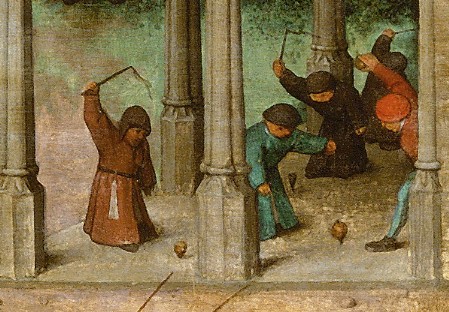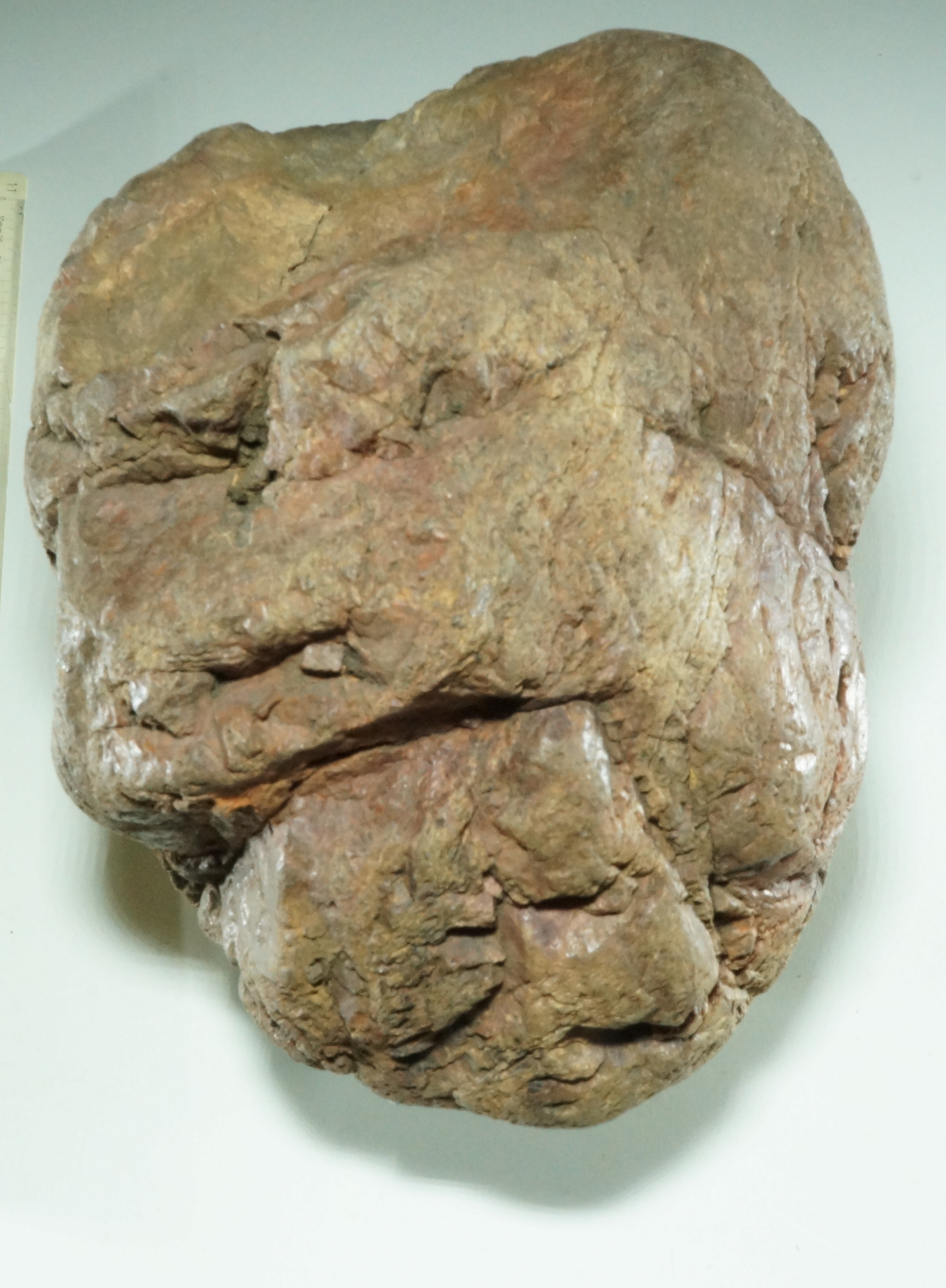.

"Various spinning tops" in Pieter Bruegel's (1526/30-1569) painting The Children's Games (1560).
(Attr. Pieter Brueghel the Elder, Public domain, via Wikimedia Commons)
Reading Kafka: The Top (1920)
Nachgelassene Schriften und Fragmente II [9] [„Konvolut 1920“] [see]
Ein Philosoph trieb sich immer dort herum wo Kinder spielten
A philosopher was always hanging around where children played.
[Since the title is not by Kafka, the first sentence is important to begin with. It is about a philosopher and children and, as the following sentences show, about their relationship to a spinning top. As in Up in the Gallery, two different forms of interaction are juxtaposed. It is also noticeable that the behaviour of the philosopher is described as hanging around, which does not exactly show respect for him].
Und sah er einen Jungen, der einen Kreisel hatte lauerte er schon. Kaum war der Kreisel in Drehung, verfolgte ihn der Philosoph um ihn zu fangen.
And when he saw a boy with a top, he was already lying in wait. As soon as the top started spinning, the philosopher pursued it to catch it.
[The fact that the philosopher is lying in wait, pursuing the spinning top and trying to catch it, also does not correspond to the common idea of a philosopher. The sentence structure together with the "always" in the first sentence shows that it is a process that happens again and again, similar to the first part of Up in the Gallery].
Dass die Kinder lärmten und ihn von ihrem Spielzeug abzuhalten suchten kümmerte ihn nicht, hatte er den Kreisel, solange er sich noch drehte, gefangen, war er glücklich, aber nur einen Augenblick, dann warf er ihn zu Boden und ging fort.
He didn't care that the children were making noise and trying to keep him from their toy, once he had caught the top while it was still spinning, he was happy, but only for a moment, then he threw it to the ground and walked away.
[He doesn't care about the loud protests of the children. He is after all concerned with the principle, with the essence of a thing. There he cannot show any consideration. He is concerned with the spinning top as long as it spins, which is its essence. As a critical, rational thinker, it should have been immediately clear to him that he is preventing precisely this by his attempts to catch it. But the brief happiness and the subsequent complete disappointment show how much he is fascinated by the phenomenon of the spinning top and therefore keeps trying.]
Er glaubte nämlich, die Erkenntnis jeder Kleinigkeit, also z.B. auch eines sich drehenden Kreisels genüge zur Erkenntnis des Allgemeinen.
He believed that the knowledge of every little thing, e.g. also of a spinning top, was sufficient for the knowledge of the general.
[Here the reason for this fascination becomes apparent. He believes he has found a fundamental principle of cognition. The fact that in applying this principle he then overrides simple basic rules of human cognition and behaves downright irrationally is described ironically by Kafka in the preceding sentences. At the same time, the fascination that emanates from the spinning top, which is of course felt above all by the children, is quite understandable. It lies in the fact that the spinning top stands still the faster it turns. In more philosophical terms, then, it lies in the unity of rest and movement (which Kafka also dealt with, for example when he attributed to the philosopher Zeno the statement: "The flying arrow rests.")] [read more]
Darum beschäftigte er sich nicht mit den grossen Problemen, das schien ihm unökonomisch, war die kleinste Kleinigkeit wirklich erkannt, dann war alles erkannt, deshalb beschäftigte er sich nur mit dem sich drehenden Kreisel.
That is why he did not concern himself with the big problems, that seemed uneconomical to him, if the smallest detail was really known, then everything was known, that is why he only concerned himself with the spinning top.
[The philosopher wants to act rationally and "economically", based on the sentence "if the smallest detail was really known, then everything was known", which forms the pivot of this text, as it were. It can be seen here that the text itself more or less imitates a spinning top with the seemingly irrefutable truth expressed in this sentence as its axis and the centre at rest. Before and after it, everything is in motion and unstable, especially at the periphery (in the first and last sentences), as the verbs "hanging around" and "staggered" show. The striking repetition of "concern(ed) himself with" also suggests a symmetry of expressions repeated at roughly the same distance from the centre.] [read more]
Und immer wenn die Vorbereitungen zum Drehen des Kreisels gemacht wurden, hatte er Hoffnung, nun werde es gelingen und drehte sich der Kreisel, wurde ihm im atemlosen Laufen nach ihm die Hoffnung zur Gewissheit, hielt er aber dann das dumme Holzstück in der Hand, wurde ihm übel und das Geschrei der Kinder, dass er bisher nicht gehört hatte und das ihm jetzt plötzlich in die Ohren fuhr, jagte ihn fort, er taumelte wie ein Kreisel unter einer ungeschickten Peitsche.
And whenever the preparations were made to turn the top, he had hope that now it would succeed, and when the top spun, hope became certainty as he ran breathlessly after it, but if he then held the stupid piece of wood in his hand, he felt sick and the shouting of the children, which he had not heard before and which now suddenly reached his ears, chased him away, he staggered like a top under a clumsy whip.
[Symmetrically to the first part, here again the "attempts to catch" of the philosopher are described. But despite the "always" at the beginning, if one follows the movement of the text, one has the impression that the events here come to a conclusion, brought about by the "breathless" dynamic description in a single long period.
In the first part, we had to deal with short, precise statements, in which the behavior of the philosopher was described objectively and unemotionally. This mode of presentation corresponds to the attitude that we normally expect from a philosopher and that we also find in the first part of Up in the Gallery. Only in the verbs " hanging around" and " laying in wait" a behavior not in accordance with the detachment and dignity of the philosopher is ironically suggested, as well as in his briefly rising feeling of happiness, which quickly gives way to the sober realization of his failure.In contrast, the description of the same process in the second part consists of only one period, which shows an increasingly emotionally determined attitude of the philosopher. He lets himself be carried more and more by his feelings, so that his hope finally becomes a certainty to him, only to give way then with one blow to the opposite feeling of nausea. His emotional, irrational behavior is also evident when he calls the top a "stupid piece of wood," although of course it is clear who alone can be the stupid one here. The breathless running and staggering indicate a lower degree of awareness and self-control. Through the almost dramatic and emotional description compared to the first part, the reader is also emotionally drawn into the process and understands it as a unique, concluding event with which the philosopher's attempts end in his staggering "like a top under a clumsy whip."It follows, then, that the philosopher's attitude and his consciousness are significantly altered in the second part. Thus, it is hard to imagine him returning to the attitude of the first part after this experience and persistently continuing his preoccupation with the spinning top. This change of consciousness appears mainly under negative aspects, as nausea and in his emotional and irrational reaction.In contrast to Up in the Gallery, where the fundamentally different attitudes of the two gallery visitors are placed unmediated next to each other, in The Top, on the other hand, the possibility of a mediation is expressed in the central image of the spinning top. While it cannot be said that the philosopher succeeds in this, a development in this direction is at least hinted at. The same philosopher who, in the certainty of his reflective consciousness as expressed in the central sentence, had completely detached himself from reality, now becomes aware of the limits of this consciousness in a painful, almost physical experience ("felt sick," "staggered"). Also "the shouting of the children, which he had not heard before and which now suddenly reached his ears," points to this. He is now open to such new experiences, which here, however, appear entirely under a negative sign, as distortions of a positive possibility. Certainly, he is far from an integration of both attitudes, the ability to give himself completely to the object without losing his reflective consciousness.Nevertheless, it seems to me that this is at least hinted at as a possibility for the philosopher when it says of him at the end: "he staggered like a top under a clumsy whip". That he is compared to the spinning top shows that something of the essence of his object of cognition has passed over to him. The "staggering" does not seem to have only a negative meaning here, like the "weeping" at the end of Up in the Gallery. It remains open to the possibility that, using the same image, he may no longer stagger under a more skillful whip. Moreover, the notion of 'staggering' and, more clearly, that of 'reeling' in connections such as 'reel of joy', 'reel of enthusiasm' may well have positive meanings. It comes close to terms like 'drunkenness' and 'intoxication' where they are associated with the creative. One can also think here, especially since we are dealing with a philosopher, of Nietzsche's concept of the 'Dionysian', in contrast to the initial 'Apollonian' attitude of the protagonist. Thus, at the end, the philosopher's failure, which at first glance seems so complete and downright miserable, is mitigated by the new possibility implied here, which arises from his altered consciousness."]

